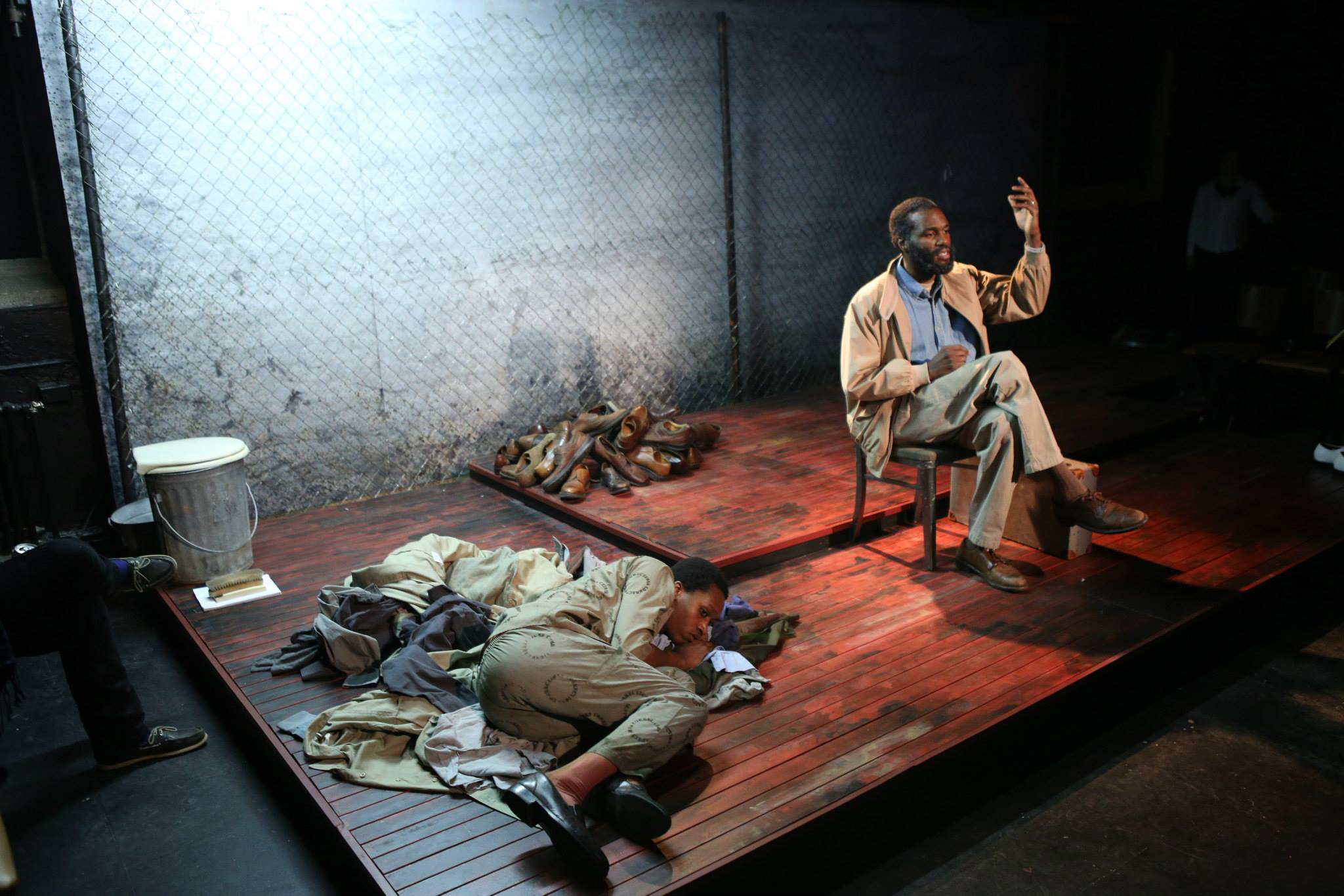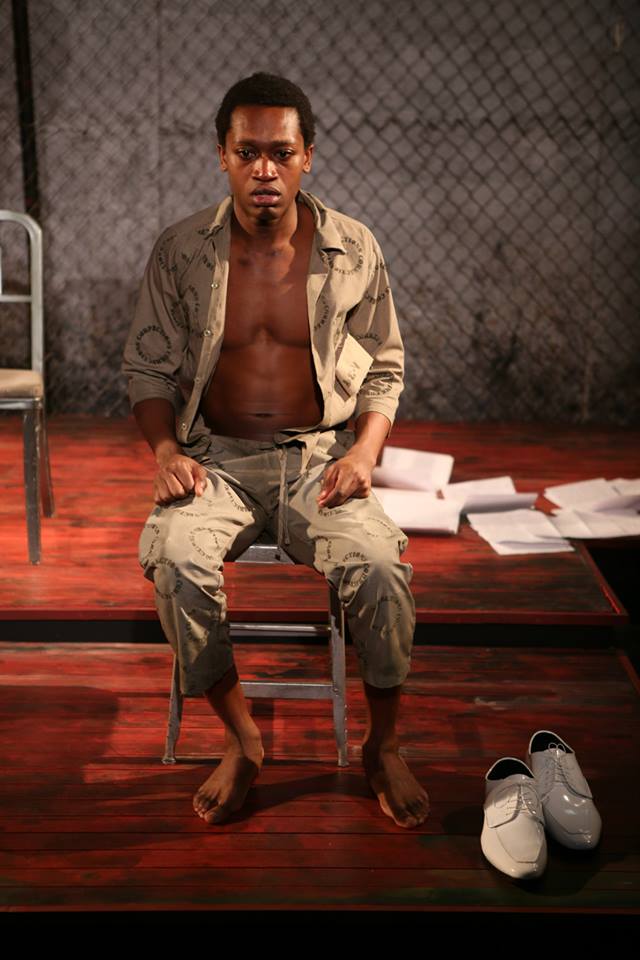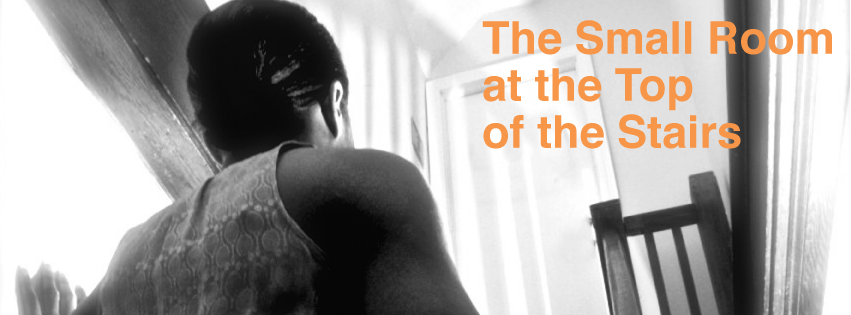“There’s no accounting for taste,” the saying goes. Here, at the end of another season at the Yale Cabaret—Season 48, but the 7th I’ve been a witness to—it’s time for my annual recap, which might be described as a way of accounting for my own tastes.
It’s not a competitive environment, the Cab. So many names recur again and again in these lists because there’s very much a “get it done as best you can with who’s available” mode at work much of the time. So, I’ll start off with paying tribute to everyone who took the time to take part in Season 48 at what remains my favorite place for theater in New Haven. Season 48—2015-16—was a tough year for many reasons and it was good to have that little life-raft down the steps at 217 Park Street, maintained by Co-Artistic Directors David Bruin, Julian Elijah Martinez, Leora Morris, and Managing Director Annie Middleton.
David Bruin, Leora Morris, Julian Elijah Martinez, Annie Middleton
Here are, in chronological order, my four best-remembered and, in final position, most treasured contributions to the season in the following categories: New Plays; Existing Plays; Set Design; Costume Design; Lighting Design; Sound Design; Music; Projections and Effects; Ensemble Acting; Actor (male), Actor (female) in supporting role; Actor (male), Actor (female) in main role; Directing; Production.
Here goes.
There weren’t that many New Plays in the season, which began with an adaptation of a preexisting play, and the other eligibles are here as well: We Are All Here, an adaptation of Charles L. Mee’s Wintertime by David Bruin and Jiréh Breon Holder: a large cast enacting complex relationships with a great frenetic use of the Cab space; MoonSong by Sean Patrick Higgins: a touching and gently comic look at a talented family struck by illness; Salt Pepper Ketchup by Josh Wilder: the first part of a topical tale about the tensions surrounding gentrification in food service in Philadelphia’s Point Breeze neighborhood; Lake Kelsey by Dylan Frederick: a contemporary coming of age musical in which the kids are not so alright; and . . . How We Died of Disease-Related Illness by Miranda Rose Hall:, my favorite because I grew up on Monty Python and sketch comedy and this zany, rapid-fire take on current anxieties (don’t get me started on the medical profession) scored with me all the way.
For Existing Plays, there are more to choose from, and my selection is based on the kinds of things I find most fascinating in works I haven’t seen before: Boris Yeltsin by Mickaël de Oliveira, translated by Maria Inês Marques: an update of the story of Agamemnon and Orestes, sharply scripted and sharply acted, with a definite ax to grind; Cloud Tectonics by José Rivera: a lyrical love story exploring archetypal relations in a convincing way; Dutch Masters by Greg Keller: a class-and-race clash, forcing us to delve into the vulnerabilities behind the issues; The Bitter Tears of Petra Von Kant by Rainer Werner Fassbinder: an intimate glimpse of a diva at home experiencing life-changing love, touched with both cynicism and romanticism; and . . . Knives in Hens by David Harrower: my favorite because of its truly striking ear for the English language, and its cast and setting perfectly captured a world both elemental and deeply suggestive.
For Set Design: The Secretaries (Jean Kim), a finely worked up space able to accommodate very different settings, from bedroom to work place to lumber camp; Trouble in Tahiti (Rae Powell), an amazing cartoon cut-out look that suited the show perfectly; Cloud Tectonics (Izmir Ickbal), a surprisingly real space for this rather unreal tale; And Tell Sad Stories of the Death of Queens (Lucie Dawkins; Sarah Nietfeld), a room can reveal and conceal, and this space did both with more origami cranes than could be counted; and . . . The Bitter Tears of Petra Von Kant (Christopher Thompson; Claire DeLiso), you can’t put a functioning turntable in a set and not get my attention, and this set was not only worthy of Fassbinder it made me want to visit.
For Costumes, the first thing I noticed was that the same person—with different nominal designations on the programs—was responsible for much of the stuff I was most impressed with: The Secretaries (Asa Benally): matching look to type is always helpful in comedy and the various takes—and take-offs—of these ladies had work to do; Boris Yeltsin (Haydee Zelideth): costuming can include use of nudity and how that played into this tale of a bizarre family romance was casual and crafty; How We Died of Disease-Related Illness (Sarah Nietfeld): if only for the transformations of Trisha, and the other quick changes before our eyes; The Bitter Tears of Petra Von Kant (Haydee Zelideth Antunano): clothes make the lady in this tale of a fashion designer, which just wouldn’t work without the semiotics of appearances; and . . . Trouble in Tahiti (Haydee Antunano; Asa Benally): my favorite because of the look of the vocal trio and the elegant bourgeoisity of the principals.
For Lighting: Knives in Hens (Andrew F. Griffin): the look of this show stayed with me for a long time; The Secretaries (Elizabeth Green): lighting was at times a special effect in the varied moods of this wildly funny show; Trouble in Tahiti (Carolina Oritz): a show with a visual style that fully complemented its music; Cloud Tectonics (Elizabeth Mak): lighting and other subtle effects helped in this play of stopped time; and . . . Roberto Zucco (Andrew F. Griffin): with much of the action occurring behind scrims, the play of light in the show was an expressive and striking element.
For Sound: Knives in Hens (Tom Starkey): many nice aural touches to create a surround of tension; I’m With You in Rockland (Nok Kanchanabanca): balancing jazz, spoken word, and videos into a coherent whole; The Secretaries (Kate Marvin): the range of soundscape added to the exaggerated reality of this sharp satire; Cloud Tectonics (Tye Hunt Fitzgerald): the sound of the storm felt palpable and impressive; and . . . How We Died of Disease-Related Illness (Frederick Kennedy): important use of unsettling sound effects and live and recorded voices made this the most memorable to me.
For Music: I’m With You in Rockland (Ian Gottlieb; Dylan Mattingly): percussion and piano were the stars of the show; The Bitter Tears of Petra Von Kant (Frederick Kennedy; Christopher Ross-Ewart): composed music and songs on the stereo added extra levels of emotion; Someone to Watch Over Me (Andrew Burnap): fine renditions of the voice and trumpet of the great Chet Baker; Lake Kelsey (Dylan Frederick): catchy and incisive exposition through song; and . . . Trouble in Tahiti (Leonard Bernstein; Music Director: Jill Brunelle): a beautiful arrangement of a score with classical lyricism and ethnic inflections, somewhere between opera and musical theater.
For Projections and Artistic Effects: Roberto Zucco (Rasean Davonte Johnson, projection design): a barrage of effects for the finale of a killer’s bad end; Slouch (Brittany Bland, projection design): moody, collage-like effects added much visual interest to this tale of groping interiorities; How We Died of Disease-Related Illness (Brittany Bland, projection design): video intrusions added to the spectacle of medical chaos; Do All Daddies Have Grey Suits? (Aylin Tekiner, Conceptual Artist; Kemal Gökhan Gürses, Illustrator Artist; Brittany Bland, projection design): a wonderfully involved use of video, shadow puppets, animation to tell a child’s eye view of violence and death; and . . . Trouble in Tahiti (Rasean Davonte Johnson, projection design): the visuals brilliantly created commentary and expanded on the dramatic situations presented.
For Ensemble acting: We Are All Here (Jenelle Chu, Claire DeLiso, Edmund Donovan, Brontë England-Nelson, Christopher Ghaffari, Jonathan Higginbotham, Sean Patrick Higgins, Maria Inês Marques, Victoria Whooper, Ian Williams): a rough and tumble ensemble with everyone adding to the comic tensions; The Secretaries (Jenelle Chu, Annie Hägg, Chalia La Tour, Annelise Lawson, Shaunette Renée Wilson): a ladies only night—and it was irresistible to see five of the six actresses of the class of 2016 tearing it up together; Salt Pepper Ketchup (Mia Antoinette, Jason de Beer, Eston J. Fung, Sean Boyce Johnson, Steven Lee Johnson, Tanmay Manohar, Francesca Fernandez McKenzie, James Udom, Seta Wainiqolo): a sustained sense of community with delicate detentes and violent intrusions; The Bitter Tears of Petra Von Kant (Baize Buzan, Anna Crivelli, Sydney Lemmon, Annelise Lawson, Leyla Levi, Shaunette Renée Wilson): another ladies only play that lets us into an inner circle being destroyed from within; and . . . Roberto Zucco (Juliana Canfield, Paul Cooper, Brontë England-Nelson, Dylan Frederick, Aubie Merrylees, Alyssa Miller, Jacob Osborne): though there’s clearly a central character, there were many mini-cameos of a variety of types in this darkly comic tale.
Even in the midst of great ensemble work, there were roles that lit up with memorable intensity: Actor (female), in supporting role(s): Baize Buzan as the mercurial love object in The Bitter Tears of Petra Von Kant; Chalia La Tour as the sadistic supervisor in The Secretaries; Brontë England-Nelson as several roles, including an enthralled woman and an old man in Roberto Zucco; Marié Botha for her comic shopping spree in Slouch; and . . . for a hilarious range of commentators, amazingly lucid in each incarnation, Juliana Canfield in How We Died of Disease-Related Illness.
Actor (male), in supporting role(s): Sean Patrick Higgins as the dad with wife, male lover, and nubile daughter troubles in We Are All Here; Paul Cooper as the fascinatingly dark and introspective Miller in Knives in Hens; Julian Elijah Martinez as a boyish Orestes learning to man up in Boris Yeltsin; Eston J. Fung as the harried and scheming fast food joint owner in Salt Pepper Ketchup; and . . . for two roles, equally memorable: the unnervingly patriarchal husband in Knives in Hens, and the wacky sick scientist with a song to sing in How We Died of Disease-Related Illness, Niall Powderly.
For “main role,” I’ve chosen parts that dominate the action or share center stage together: Actor (male): Aubie Merrylees, the killing fool and homicidal lover in Roberto Zucco; Edmund Donovan, the wary white boy getting in too deep in Dutch Masters; Leland Fowler, the seductive, deceiving, amusing and sympathetic black kid in Dutch Masters; Patrick Madden, the accommodating queen of her own fantasy heading for a fall in And Tell Sad Stories of the Death of Queens; and . . . a thoughtful lover missing the cues for a full life but achieving a poetic end, Bradley James Tejeda in Cloud Tectonics.
Actor (female): Mary Higgins, as the mom with a song in her heart and a wry sense of her own frailty in MoonSong; Kelly Hill, as a wife looking for the romantic magic she never knew in Trouble in Tahiti; Stephanie Machado, as the mysterious time-stopping archetypal pregnant madonna in Cloud Tectonics; Sydney Lemmon, as a vital, successful woman with a void in her heart in The Bitter Tears of Petra Von Kant; and . . . as Woman, on her way to knowledge and, through stylized encounters with male figures, finding her own voice, Elizabeth Stahlmann in Knives in Hens.
For Direction, thanks to everyone who takes on this task, but to single-out productions where the grasp of complex material was very telling: Jesse Rasmussen, for the mysterious, portentous world of Knives in Hens; Christopher Ghaffari, for finding a way to stage at the Cab a truncated Bernard-Marie Koltès play with a sprawling cast of characters, Roberto Zucco; Lynda Paul, for the incorporation of music, voice, acting, visuals, comedy, romance into a Gesamtkunstwerk in Trouble in Tahiti; Leora Morris, with Jesse Rasmussen, for a pacing and tone that revitalizes Fassbinder in The Bitter Tears of Petra Von Kant; and . . . for going over the top, to the edge of chaos and back in How We Died of Disease-Related Illness, and for a slowburn control of barbed material in Boris Yeltsin, Elizabeth Dinkova.
And for overall Production: Knives in Hens: Adam J. Frank, Producer; Davina Moss, Dramaturg; Rebekah Heusel, Stage Manager; Roberto Zucco: Tanmay Manohar, Gretchen Wright, Producers; Ariel Sibert, Dramaturg; Emely Zepeda, Stage Manager; How We Died of Disease-Related Illness: Kathy Ruoran Li, Producer; David Clauson, Stage Manager; The Bitter Tears of Petra Von Kant: Maria Inês Marques, Producer & Dramaturg; Avery Trunko, Stage Manager; and . . . (call me sentimental, but I was born at the end of the 1950s) Trouble in Tahiti: Steven Koernig, Producer; Taylor Barfield, Dramaturg; Jennifer Schmidt, Avery Trunko, Co-Stage Managers.
Farewell, Cab 48. Howdy, Cab 49.















